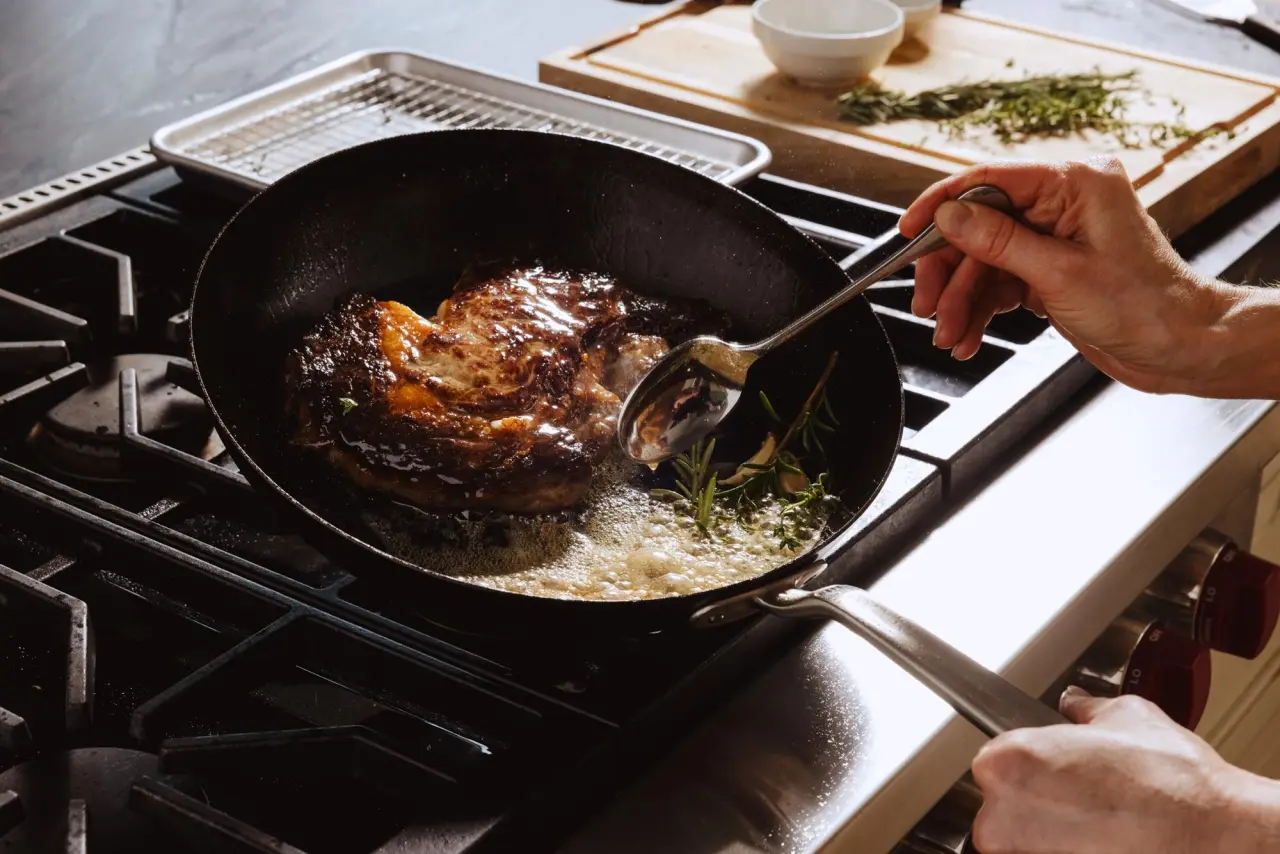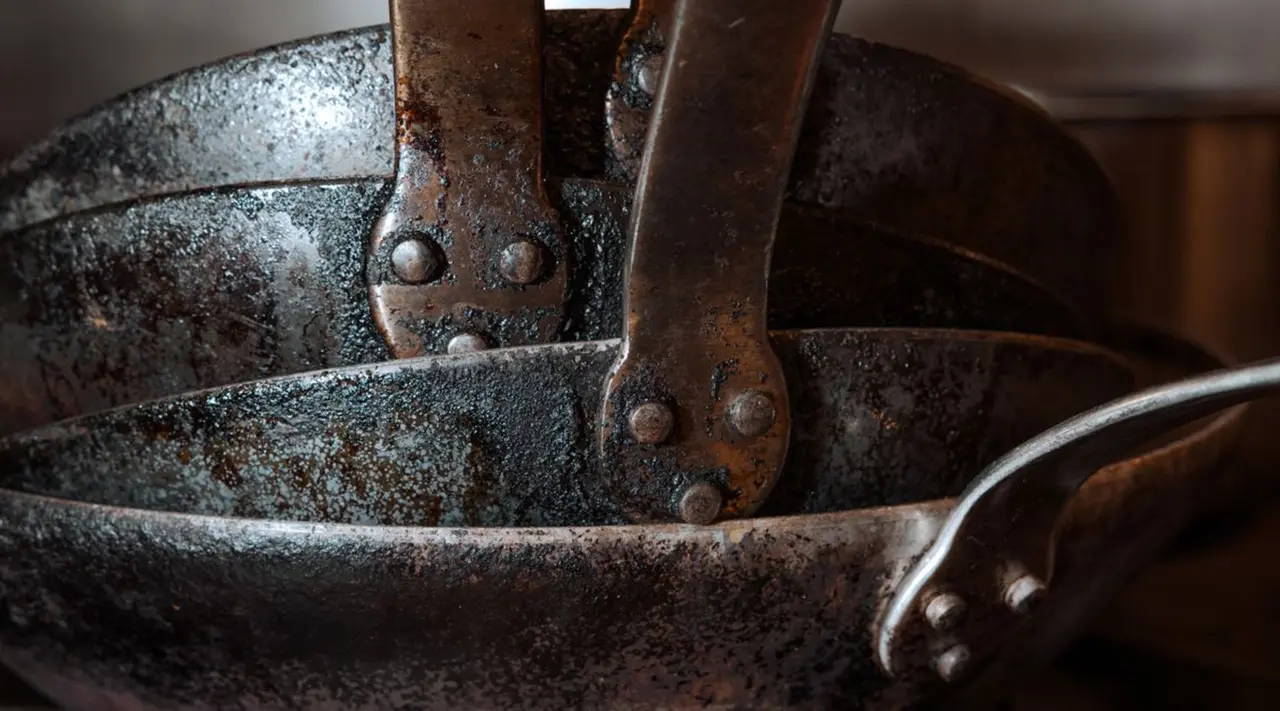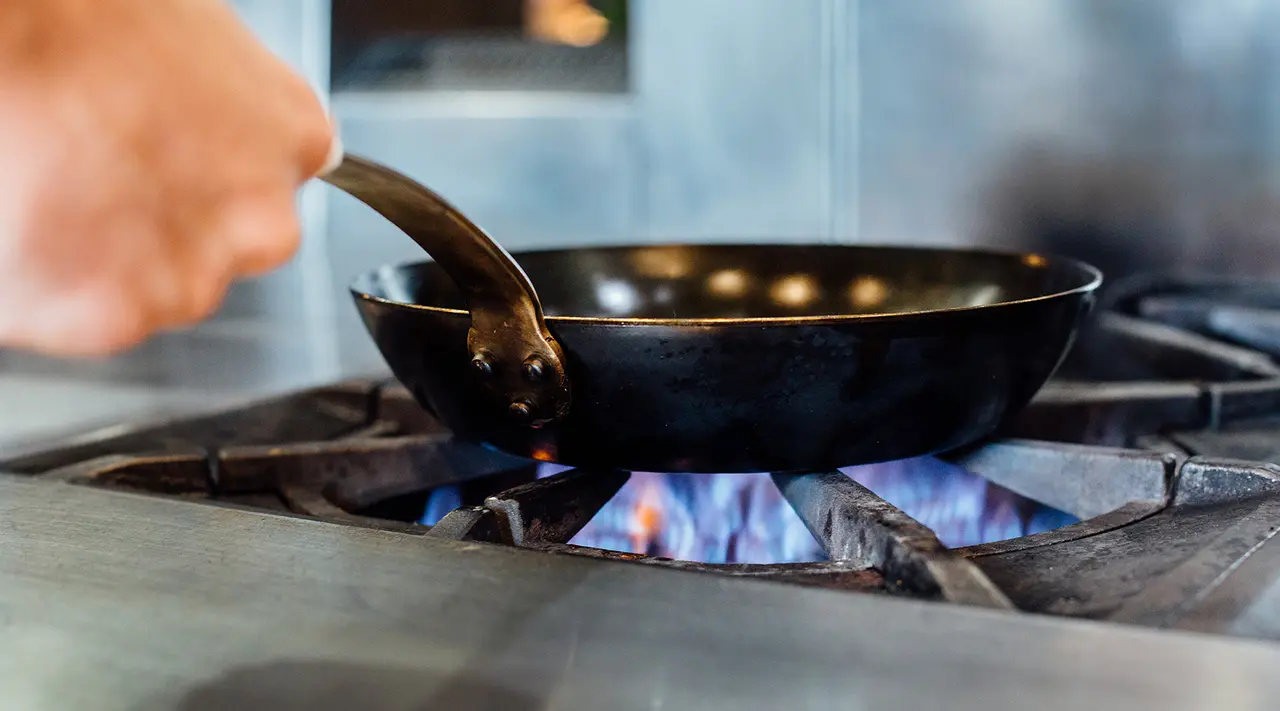There’s something about the look and feel of wood—it’s classic yet modern, rustic yet chic. Apply that style to a well-made knife and you’ll add an attractive upgrade to your knife collection.
That said, wood is a bit more finicky to care for than other knife handle materials. Here are some tips for optimum wood handle knife care to ensure your knives stay in top condition for years to come.
Understanding Wood Handle Knives
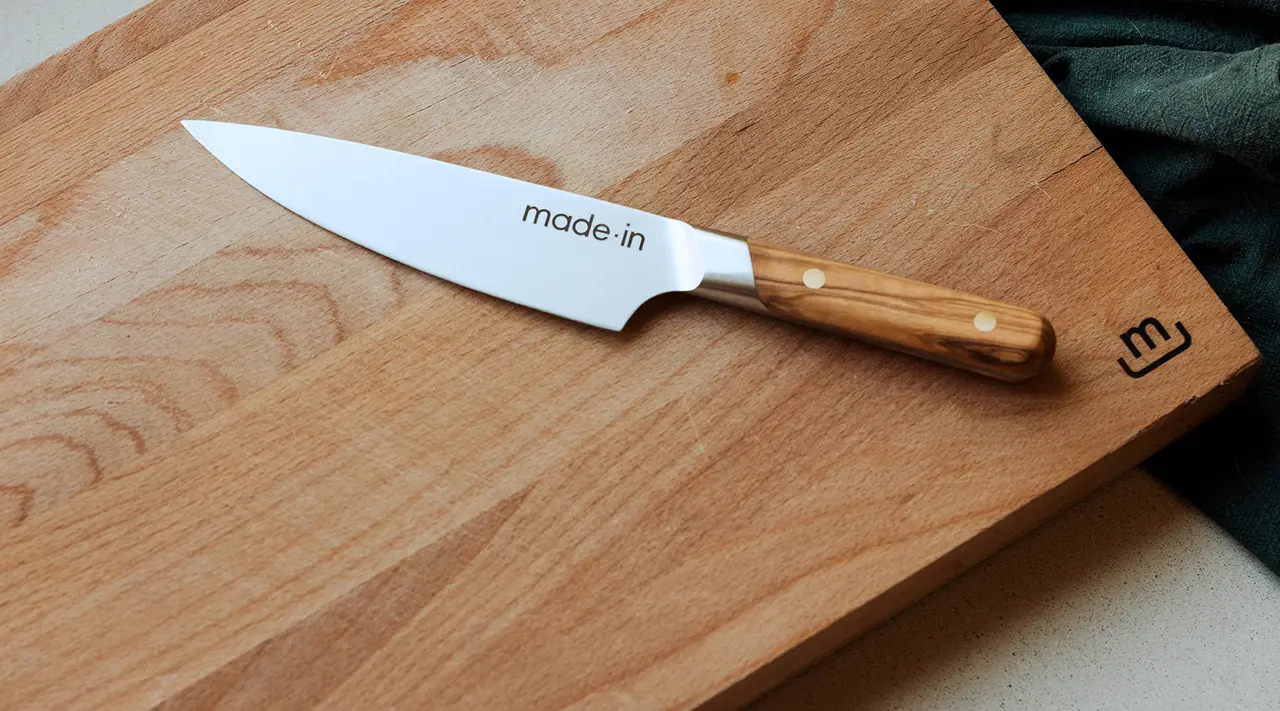
We offer two types of wood for our wood handle knives: reclaimed Olive Wood crafted in Spain, and Amaranth Wood from South America. Both bring with them their own unique coloration and aesthetic appeal.
Functionally, wood handles can provide you with more grip and are often more comfortable to hold compared to other materials like plastic. Think of the tactile differences when using a metal or plastic handled spoon compared to a wooden one—wood has a certain appeal, no? Wood also absorbs shock well, which is a big reason why wooden cutting boards and butcher blocks are so appealing—they provide a relatively soft landing for knives compared to other materials.
As with wooden cutting boards, you might think that wood’s natural porous nature would make it prone to harbor bacteria, but certain types of wood actually have antimicrobial properties. Olive wood in particular is quite dense, meaning it’s less likely to hold bacteria (not to mention stains and smells!).
Amaranth wood is also quite durable, making it an ideal material for knife handles. And just like skin, wood can dry out over time, especially after repeated use and washing. Thankfully it’s easy to moisturize and condition wood handle knives with food-safe oils—more on that below.
Cleaning and Maintenance Techniques for Wooden Handles
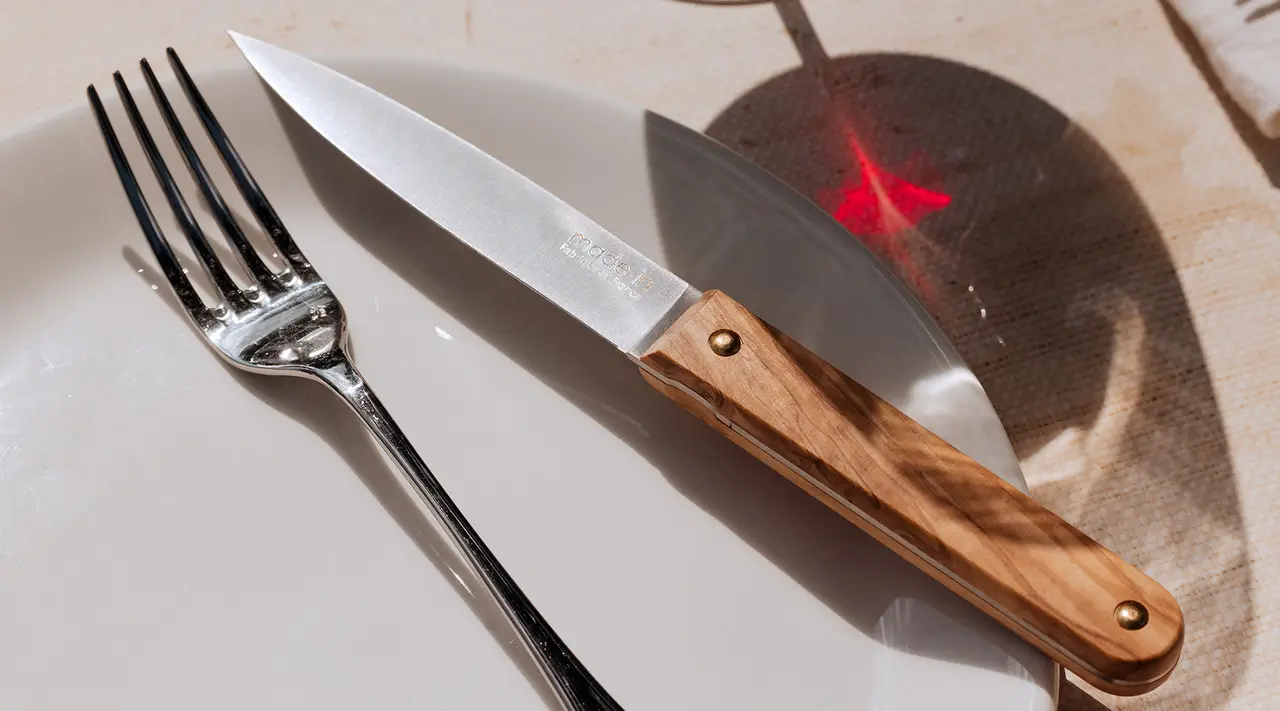
To keep your wooden knives in fighting shape, here are a few tips to follow.
The Importance of Oiling
Oiling also saturates wood’s pores, which prevents water from being absorbed. Add a few drops of a food safe oil, like mineral oil, or our Wood Conditioner, to a clean towel (you might want to dedicate an old towel for this purpose, as the oil will cause stains), then gently buff the oil into the handle. Don’t over do it—you don’t want a greasy handle. Let the knife sit out for a few hours until the oil fully absorbs, then store your knife.
With average use, plan on oiling your wood handle knives at least two times a year. But if the handle feels dry, by all means give it another go.
Skip the Dishwasher
This goes for all kitchen knives, but especially wooden handled ones: do not put them in the dishwasher. For that matter, don’t put anything wooden in the dishwasher, butcher blocks included—if you do, you’ll quickly notice the wood drying out, making it prone to cracking that not even regular oiling can resolve. Instead, wash by hand with warm soapy water, avoiding harsh detergents.
Dry Immediately
Carefully dry the knife blade and handle immediately after washing, both to avoid water spots and stains on the blade but also to make sure the wood handle is dry. Above all else, don’t let the handle soak or sit in water for too long.
Store Correctly
After your wood handle knife is clean and dry, store it, whether it’s on a knife block, an in-drawer knife organizer, or magnetic knife strip. Choose whichever storage method works for you and your space.
Proper Use
When it comes to using your wood handle knives, a little attention to technique can have a big payoff. While you can hold the knife by its handle, this can lead to difficulty with balancing the knife as you chop, and in turn you’ll probably lack precision. For this reason, the pinch grip is our recommendation.
For the pinch grip, you’ll grip the knife handle with your pinky, ring, and middle finger, curling them around the base of the handle (where it meets the blade). Your pointer finger and thumb will pinch the blade itself, not the handle. It may feel like you’re gripping too much blade at first, but with practice you’ll see how it gives you more control and accuracy when chopping.
Stain Removal
If the wood handle gets stained, treat it the same way you would a wooden cutting board: sprinkle a little baking soda onto the stain, then add enough hot water to turn it into a paste. Use a sponge to scrub until the stain goes away, then rinse and dry. You may want to apply some oil now, too, to make up for all that scrubbing.
Ready to Shop?
A knife is an essential kitchen tool you’ll need to use every day. With proper care and maintenance, your wood handle knives will stay in tip top shape for years. Our Wood Conditioner is a high-performing blend of coconut oil, organic carnauba wax, beeswax, and a hint of lemon essential oil for fragrance that does not impact the taste of ingredients, perfect for caring for your Olive and Amaranth Wood knives.


